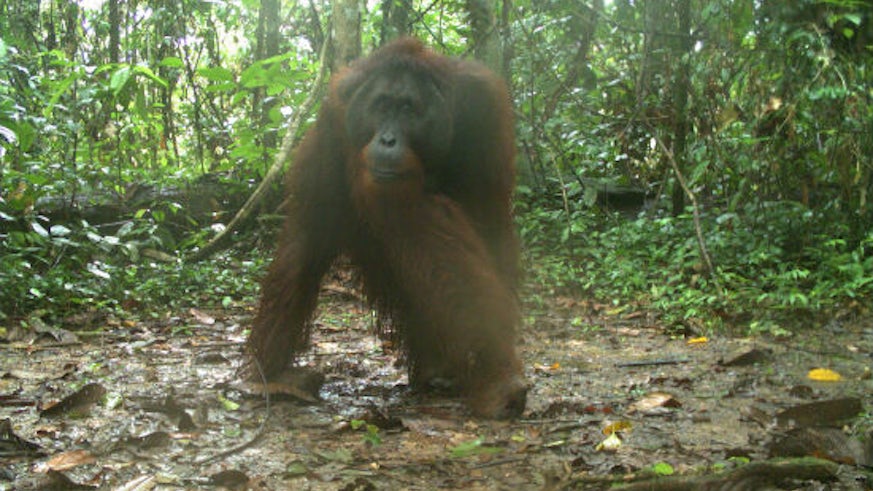Orangutans coming down from the trees
17 Chwefror 2014

Research using camera traps in Borneo has revealed that the Bornean orang-utan spends much more time walking on the ground than previously realised, which means that orang-utans are exposed to more potential danger than formerly understood.
"Orang-utans are the largest animal in the world to use tree tops (arboreal), and as long as orangutans remain up high, they are somewhat safer from dangers on the ground. In Borneo, the biggest threat is posed by us, humans," said Dr Marc Ancrenaz, Co-Director of HUTAN – Kinabatangan Orang-utan Conservation Programme based in Sabah and leader of the study.
The study, published in 'Scientific Reports', was conducted by an international team of researchers including three scientists from the School of Biosciences. "The study involved 16 different sites across Borneo, including the Kinabatangan where our field centre is established" said Dr Benoit Goossens, Director of Danau Girang Field Centre and Senior Research Associate at Cardiff University, and one of the co-authors of the paper. "All sites accumulated a total of 159,152 camera trap days throughout a variety of unlogged (primary) and logged (degraded) forest types. A total of 641 pictures of both female and male orang-utans of all ages were captured by the camera traps showing them walking on the ground" added Goossens. "In the Kinabatangan, Danau Girang Field Centre has been monitoring a corridor of forest between a large palm oil plantation and the Kinabatangan river, revealing some evidence of orangutans traveling on the ground, even in pairs of adults (male and female), adolescents, and mother and infant".
In Sabah one of the major threats for orang-utan survival is the clearing of its forest habitat for agriculture. "Even if orang-utans can walk on the ground and cross some open lands over short distances, small patches of forests that are still found scattered in the oil palm plantations of Eastern Sabah must be preserved and shouldn't been cleared if we want to secure the future of the species," stressed Ancrenaz. In the Kinabatangan, the natural forests of the Wildlife Sanctuary and Virgin Jungle Forest Reserve's are separated by mostly oil palm plantations. "Unfortunately, with all that we know about Sabah's wildlife, remaining forest patches which are not protected are still being cleared to plant oil palm".
Finally, according to Benoit Goossens, besides the danger that humans pose directly to the orang-utan's safety, increased terrestriallity also creates a higher exposure to diseases from human origin that could be spread on the ground as well as danger posed to young orang-utans from dogs and other domestic animals primarily found in plantations.